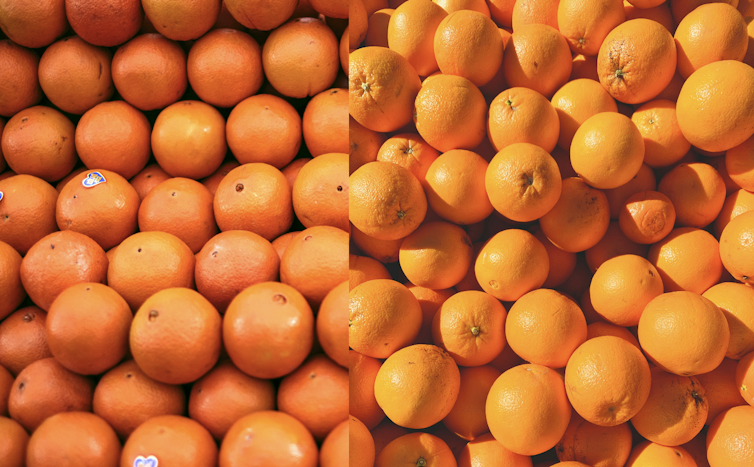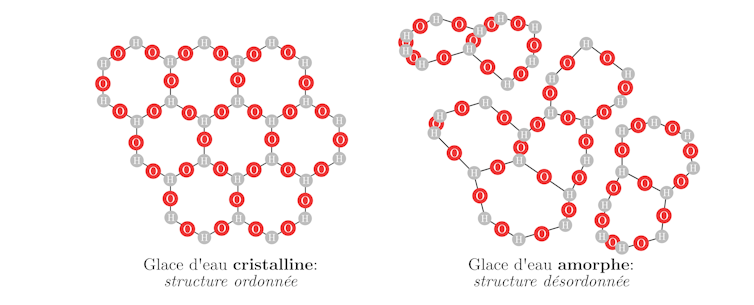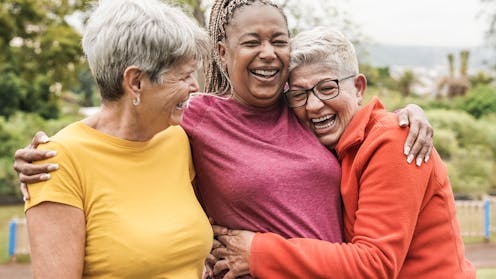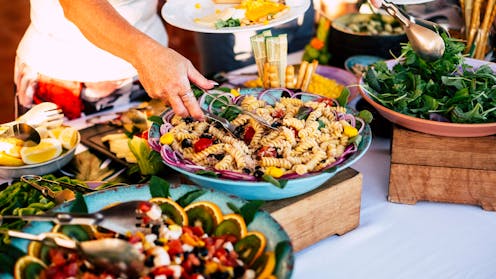Source: The Conversation – France (in French) – By Guy Tapie, Professeur de sociologie, École nationale supérieure d’architecture de Paris Val de Seine (ENSAPVS) – USPC
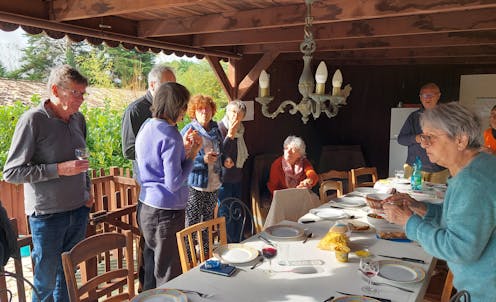
Profession architecture ville environnement, CC BY-ND
À Bègles (Gironde), près de Bordeaux, une vingtaine de seniors ont créé Boboyaka, une coopérative d’habitat participatif. En quête d’autonomie et de solidarité, ils veulent expérimenter une autre façon de vieillir et proposent une alternative citoyenne aux modèles classiques de logement des aînés. Entre obstacles administratifs et aventure humaine, ce projet se transforme en laboratoire pour tous les seniors qui souhaitent vieillir autrement.
Les boboyaka cassent l’image d’une vieillesse sans projet et une règle d’or les réunit, « vivre ensemble pour vieillir mieux et autrement ».
Le nom sent bon l’autodérision ; « bobo » identifie les racines sociales des coopérateurs, appartenant plutôt aux classes moyennes, la plupart propriétaires de leur habitat actuel, en majorité des femmes seules. L’engagement politique « à gauche », associatif et moderniste, et l’attention humaniste sont communs à tous. « Yaka » est une adresse à tous ceux qui affichent la volonté de changer la société sans vraiment passer à l’acte.
Les boboyaka disent vouloir, pour leur part, transgresser les frontières de classe et agir pour le bien commun. Ils revendiquent leur liberté d’entreprendre, dans une approche humaniste, la conception d’une résidence originale, composée de 20 logements, avec un budget de 4,7 millions d’euros. Tous y croient : débuter le chantier de la résidence fin 2025 et habiter ensemble à Bègles (Gironde), dans le quartier de la Castagne, entre la route de Toulouse, symbole de la modernité urbaine, et la rue Jules-Verne, invitation à un voyage extraordinaire.
Ce n’est ni un hébergement collectif, ni une colocation spécifique, ni une résidence-service public ou privé. Le projet combine préservation de la vie privée et mise en commun. Concrètement, c’est partager des voitures, des machines à laver, à sécher, une buanderie. C’est, tous unis, célébrer la vie collective :
« Une cuisine où l’on pourrait prendre des repas ensemble ; un atelier pour bricoler ou faire des petites choses ; un salon pour regarder des films. »
D’autres espaces sont l’occasion d’échanger avec le quartier, la ville, la société : la crèche associative, par exemple, ou deux logements locatifs destinés à des jeunes en formation ou encore un futur centre sur le vieillissement.
Une alternative aux habitats existants pour seniors
Remontons le temps. Le projet est né en 2007. À cette époque, un groupe amical débat de questions existentielles sur la vie, sur soi, sur les enfants, sur les parents et, d’autres, plus politiques, sur la solidarité entre générations, sur la critique de la propriété privée, sur l’écologie. Pendant deux à trois ans, ils s’interrogent : comment vivre une vieillesse assumée, heureuse, ensemble, dans un lieu solidaire ? Déjà, en matière d’habitat et de vieillissement, cette forme d’anticipation à long terme est rare. Elle ouvre des solutions destinées aux seniors, évitant de grever les dépenses publiques au regard d’une démographie annonçant une hausse spectaculaire des personnes dépendantes.
Les coopérateurs se disent insatisfaits des maisons de retraites, des résidences services ou du domicile, héros d’un vieillissement réussi, critiqué dès lors qu’il implique la solitude, statistiquement plus fréquente au fur et à mesure de l’avancée en âge.
Entre 2010 et 2015, le groupe explore les possibles à partir d’un projet résidentiel esquissé, en termes de localisation, d’organisation, d’architecture et de partenariats. Il regarde ailleurs des projets parents, s’inspirant de la Maison des babayagas de Montreuil, des Chamarels, d’H’Nord, parmi la bonne centaine d’opérations coopératives recensées en France. Il jauge le bien-fondé de son initiative et affirme son identité. Des choix importants sont posés : une coopérative plutôt qu’une copropriété ; vivre en ville plutôt qu’à la campagne ; travailler avec les bons partenaires ; être l’avant-garde d’un mouvement social.
Entre 2015 et 2018, la période est paradoxale. Elle est celle de la consolidation avec quelques choix cruciaux : création de la coopérative, choix d’un architecte et d’un foncier, dépôt d’un permis de construire. Les tâches sont nombreuses et tous azimuts. Bordeaux métropole cède un terrain à bon prix grâce au soutien du maire écologiste de l’époque, Noël Mamère, et au Comité ouvrier du logement, précieux intermédiaire dans l’acquisition du foncier et pour la construction. Oasis de verdure de plus de 3 500 mètres carrés, il se localise dans un quartier nommé La Castagne.

Profession architecture ville environnement, CC BY-ND
Cette période est aussi un moment un peu chaotique, avec des tensions dans le groupe conduisant au départ de certains, et à la fin de la collaboration avec un premier architecte – à l’initiative des coopérateurs.
Braver les difficultés
Entre 2018 et 2023, il faut digérer la rupture avec l’architecte, il faut gérer le confinement, refaire cohésion. L’activité est ralentie, pesant sur le calendrier du projet. Les effets pervers de la mondialisation économique et la guerre en Ukraine alourdissent le lourd climat post-Covid et poussent à la hausse des taux d’intérêt et des coûts de construction. Le recrutement d’une agence d’architecture plus en harmonie avec les aspirations du groupe est (re)fondateur.
À partir de 2023, la machine se relance, concrétisée par le permis de construire (revu) et par l’appel d’offres de travaux, un mode de fonctionnement du groupe maîtrisé pour maintenir le socle des valeurs et intégré des arrivants. Le financement est toujours en suspens, et le projet subit une cure d’austérité pour entrer dans les prix et limiter le montant de la redevance de chaque coopérateur.
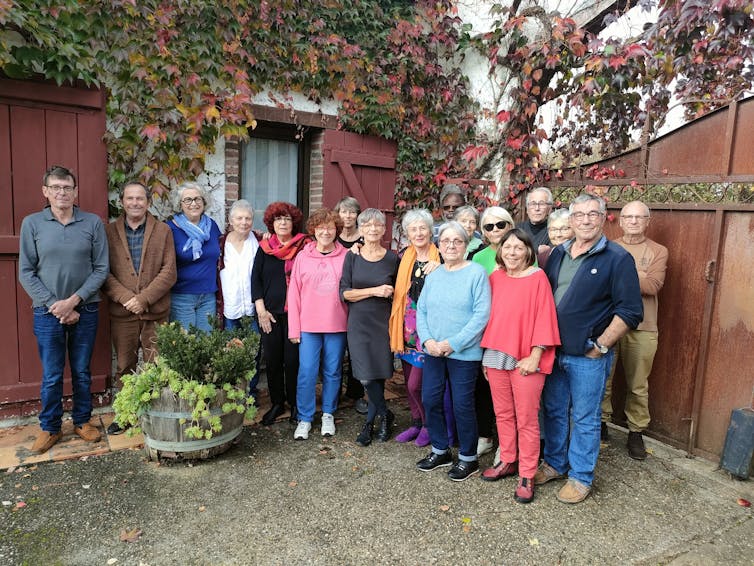
Boboyaka, CC BY-ND
Les coopérateurs ont appris aussi, se soutiennent, s’écoutent ; les nouveaux redonnent de l’énergie et dopent ceux qui momentanément se découragent. Le projet veut faire école dans un système de production de l’habitat frileux et réticent à des initiatives citoyennes, émergeant « du bas ». L’opération est labellisée par l’État dans le cadre du programme de l’État, « Engagé pour la qualité du logement de demain » (2022), confortant l’exemplarité et l’audience de la démarche.
Les porte-drapeaux d’une nouvelle société ?
Le projet embarque d’autres acteurs. Experts et professionnels de l’urbanisme et de l’architecture, autorités publiques sont sollicités pour leur soutien technique et financier, leurs compétences de la production immobilière et de maîtrise d’ouvrage. Il y a des sympathies entre eux, des convergences idéologiques, des attentions réciproques (avec Atcoop, le Col, Sage, l’agence d’architecture). D’autres fois, ce sont des oppositions avec des voisins virulents qui ont perdu leur paradis vert ; des incompréhensions avec les banques, surprises par la demande de prêts de seniors, ou avec le premier architecte.
Les coopérations engagées, la pugnacité des bobobyaka et la technicité acquise maintiennent le cap sans dépouiller le projet sous pression de nombreuses réglementations et de négociations « épuisantes ».
Chez les boboyaka, les sujets sociétaux n’effraient pas, « Nous réfléchissons sur la solidarité, l’autogestion, l’écologie et la laïcité. » Les valeurs d’un vivre ensemble ne sont pas galvaudées, car elles lient des personnes dans un collectif affirmé, « une tribu », qui se démarque de l’individualisme dominant et d’un repli entre-soi. Beaucoup s’imaginent en porte-drapeau d’une nouvelle société : les filtres politiques, bureaucratiques et réglementaires, la défiance de partenaires, ont douché les espoirs d’une adhésion spontanée et de conviction.
Il faut de la pédagogie, de la constance et garder son calme malgré l’assaut répété de recours, de refus ou d’attitudes méprisantes. Les boboyaka savent plus que d’autres que le temps est précieux et veulent décider de leur fin de vie.
Cet article est publié dans le cadre de la série « Regards croisés : culture, recherche et société », publiée avec le soutien de la Délégation générale à la transmission, aux territoires et à la démocratie culturelle du ministère de la culture.
![]()
Les auteurs ne travaillent pas, ne conseillent pas, ne possèdent pas de parts, ne reçoivent pas de fonds d’une organisation qui pourrait tirer profit de cet article, et n’ont déclaré aucune autre affiliation que leur organisme de recherche.
– ref. Vieillir sans maison de retraite : le pari coopératif des « boboyaka » à Bordeaux – https://theconversation.com/vieillir-sans-maison-de-retraite-le-pari-cooperatif-des-boboyaka-a-bordeaux-258935


